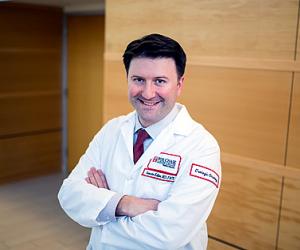Article
Unexpected NCCN update to active surveillance guideline prompts Twitter uproar among urologists
Author(s):
Active surveillance is no longer the preferred management strategy for low-risk prostate cancer, according to the updated NCCN guideline.
Last week, urologists on twitter broke out into a frenzy of surprise and dismay about a new National Comprehensive Cancer Network (NCCN) guideline update regarding active surveillance for patients with prostate cancer.
Urologist Alexander Kutikov, MD, FACS, was one of the twitter users who participated in the discussion sparked by the NCCN. He tweeted, “As a senior [statesman] of the field and one of the smartest guys in medicine, you weren’t given a chance to vote on or even discuss something that affects tens of thousands of [patients] per year? hmm… as my kids would say, ‘that’s sus,’”1 in response to a comment by urologist David Penson, MD, MPH, MMHC, who explained that he was not at the meeting where this guideline was discussed.2
Alexander Kutikov, MD, FACS

Kutikov is chief of the division of urology and urologic oncology and a professor in the department of surgical oncology at the Fox Chase Cancer Center, Temple University, Philadelphia, Pennsylvania.
Please discuss the recent NCCN prostate cancer guideline change that prompted a conversation on Twitter among yourself and several other urologists.
The NCCN made a minor change where active surveillance was no longer the preferred management strategy for low-risk prostate cancer, but for very low-risk prostate cancer active surveillance remained the preferred strategy. This was a change that was really unexpected. This was a change that wasn't prompted by new evidence. This was really something that caught everybody by surprise. I think the community was just asking the NCCN for transparency, and to better understand what initiated this change, since a lot of us in the localized prostate cancer community feel strongly that active surveillance is really underutilized.
What is the significance of this change for providers and patients?
The signaling here from the NCCN is very confusing, not only to providers, but also to patients. When you compare active surveillance utilization in the United States to our Canadian neighbors or to the UK, we're still very low. We continue to overtreat people, many of us think, unnecessarily. So, something like this from NCCN was very surprising.
Is this change likely to affect your own management of patients with low-risk prostate cancer? Why or why not?
Certainly, in my practice, there won't be any changes in management, but we cannot underestimate the power of the NCCN guidelines. These guidelines have become increasingly powerful. We have to remember that these guidelines are really expert opinion, unlike some other guidelines that are rigorously evidence-based. These guidelines now drive insurance coverage, and they drive medical legal conversations, so the guidelines wield a lot of power. That's why I think the community was so assertive in really asking for transparency and reasons for why these changes were made because, again, they were made in complete absence of any new evidence that's coming out in the space.
Is there anything else you feel our audience should know about this?
I think the topic of guidelines, how they're generated, and what leeway each guideline allows in terms of changing them, should come into focus. For some of the procedural logistics of changing these guidelines, we're clearly finding out they don't actually require a vote. This was personally a surprise to many of us, and I think potentially that should get the community's attention.
References
1. @ureturicbud. as a senior statesmen of the field and one of the smartest guys in medicine, you weren’t given a chance to vote on or even discuss something that affects tens of thousands of patients per year? hmm… as my kids would say, “that’s sus”. https://twitter.com/uretericbud/status/1443406324201664513. Posted September 29, 2021
2. @urogeek. Like I said, I missed the meeting so I can’t comment. I wasn’t in the room where it happened. https://twitter.com/urogeek/status/1443321185740234773. Posted September 29, 2021.

















